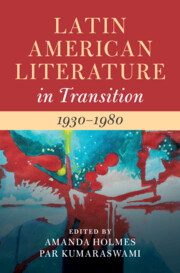Book contents
- Latin American Literature in Transition 1930–1980
- Latin American Literature in Transition
- Latin American Literature in Transition 1930–1980
- Copyright page
- Contents
- Contributors
- Introduction
- Part I War, Revolution, Dictatorship
- Part II Metropolis and Ruins
- Part III Solidarity
- Part IV Aesthetics and Innovation
- Index
The Return of the Galleons
Transitions in the Work of Alejo Carpentier
Published online by Cambridge University Press: 24 January 2023
- Latin American Literature in Transition 1930–1980
- Latin American Literature in Transition
- Latin American Literature in Transition 1930–1980
- Copyright page
- Contents
- Contributors
- Introduction
- Part I War, Revolution, Dictatorship
- Part II Metropolis and Ruins
- Part III Solidarity
- Part IV Aesthetics and Innovation
- Index
Summary
According to Alejo Carpentier, Christopher Columbus rounded, rounded off and rounded up the planet. The cost was very high for the indigenous cultures of ‘nuestra América’ [our America]. Gradually, a new culture was founded made of all possible hybrids, that came from Europe, Africa and Asia. Carpentier himself also stated that, in order for the novel to exist, there must be a tradition of the novel; the first narrative manifestations were for domestic consumption: we would have to wait for the mid-twentieth century to begin what would soon become an avalanche. It was the return to Europe of the ships that once left Palos de Moguer, the carriers of another culture.
Several concomitant factors contributed to this reception in Europe. In post-war Europe, new curiosities were being awakened. André Malraux published his Musée imaginaire, thereby breaking the traditional Eurocentric hierarchy that gave Europe a civilizing mission in the face of the barbarism represented by the unfamiliar.
- Type
- Chapter
- Information
- Latin American Literature in Transition 1930–1980 , pp. 249 - 259Publisher: Cambridge University PressPrint publication year: 2022

